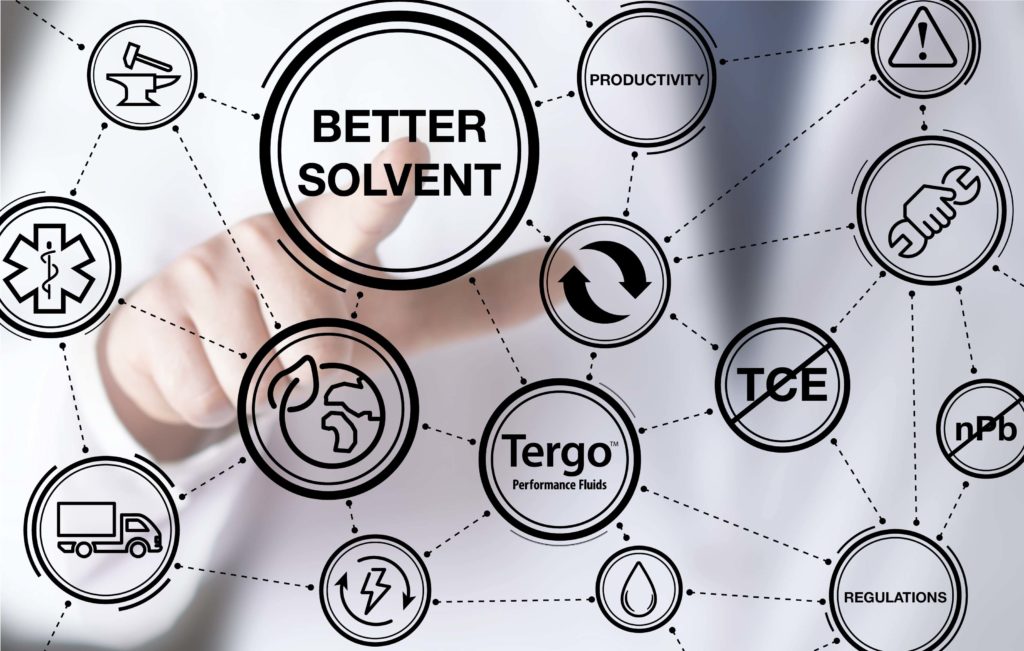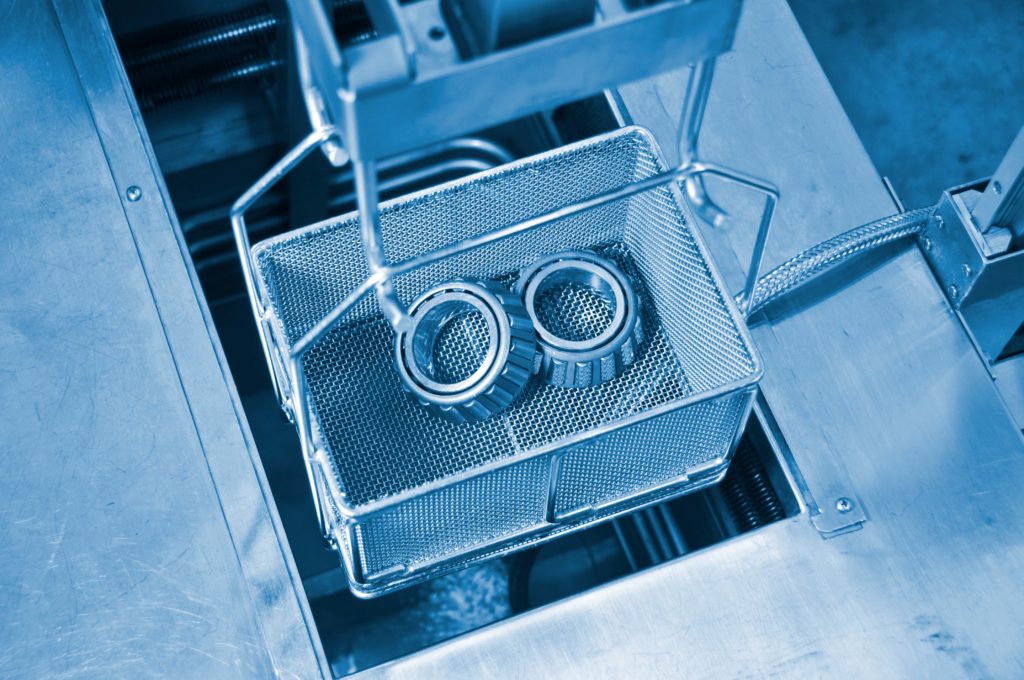
The change to a new cleaning fluid can be full of uncertainty. For many companies looking to make the switch to a better solvent it is imperative that they maintain their cleaning performance with minimal impact to throughput and productivity. The best course of action is to partner with a precision cleaning expert that you can trust.
Sheri Pear is a Marketing Communications Specialist at MicroCare Corporation
In recent years, the metal-working industry has seen an incredible range of changes. The introduction of composites and polymers, global competition to make parts smaller, lighter and more economically and ever-changing environmental regulations and requirements has made it an exciting but challenging time to be in the industry. It is imperative that companies today address and adapt to these changes to stay current, competitive and profitable. Each of these changes, especially those regarding environmental regulations, has impacted the way metal parts are cleaned and prepped for further processing like plating, coating, painting or welding. Historically, legacy solvents like nPB (n-propyl bromide), TCE (trichlorethylene) and PERC (perchloroethylene) have reliably and economically filled the cleaning requirements within the metal-working culture. Along with water, they are the chief cleaning solvents within the industry. Today however, many companies are moving away from these traditional or legacy solvents for a host of reasons. Once considered the favorites of the industry, many company owners, plant managers and environmental safety and health officers are now looking for better choices that will be more efficient, easier to maintain and less hazardous for workers and the environment. These companies, faced with the challenge of changing to alternative solvents, are concerned about the impact the change will have on their bottom-line. The biggest concerns are that switching out their cleaning solvents and processes will cause production down-time, require a big capital investment in new equipment or result in time lost training employees on new processes. Not to mention the worry that the new cleaning fluids will not deliver the same cleaning results as the old ones. Fortunately, there are a number of solvent alternatives on the market that will clean just as well, if not better than the old solvents. In many instances, the changeover to these modern fluorinated fluids is simple and does not require any investment in new equipment. Benefits can include consistent cleaning qulaity, improved throughput and decreased energy usage. Plus, these next generation cleaning fluids have an excellent toxicity profile, making them safer for people and the planet.g.

Since modern cleaning fluids boil at a lower rate than the legacy solvents, parts come out of the vapor degreaser cool enough to handle
[su_box title=”TOP TEN REASONS” box_color=”#d2162d”]1) Same or better cleaning: The modern fluorinated cleaning fluids have been lab-tested and analyzed to ensure the cleaning results are reliable, consistent and just as good as the legacy solvents. Cleaning efficiencies were maintained or improved.
2) Low cost of conversion: In many cases, most of the modern cleaning fluids can be used in existing equipment, using the same methods. After emptying and cleaning the vapor degreaser many of the replacement cleaning fluids can be “dropped in” into the machinery without an appreciable change to the cleaning process.
3) Energy savings: Many of the modern cleaning fluids have a lower boiling point and heat of vaporization than the older solvents, requiring less energy consumption, resulting in an overall energy cost savings.
4) Improved efficiency: Since modern cleaning fluids boil at a lower rate than the legacy solvents, parts come out of the vapor degreaser cool enough to handle. No extra time is required for the parts to cool down. This allows workers to move on to the next production process sooner, boosting the overall throughput and productivity.
5) Enhanced safety: Many of the new cleaning fluids are nonflammable for improved safety in the workplace. Their azeotropic properties ensure they are thermally stable and safe to use. This could also translate into to company insurance savings.
6) Healthier for workers: Many of the substitutes for nPB, PERC or TCE have better toxicity profiles and higher TLVs (Threshold Limit Values) than the legacy solvents making them safer for workers to be around.
7) Better environmental impact: Since the modern cleaning fluids do not carry a heavy regulatory burden like some of the legacy solvents, switching to a modern cleaning fluid helps you improve your environmental footprint. Most modern fluids are not considered a HAP (Hazardous Air Pollutant) and may not require NESHAP (National Emission Standards for Hazardous Air Pollutants) permits.
8) Improved maintenance procedures: except under the most extreme conditions, such as if exposed to a strong base or acid, or exposed to extreme heat, the modern cleaning fluids will not “turn acid”. They do not require the stabilizers or scavengers or weekly testing required of the legacy solvents.
9) Better working conditions: Most modern cleaning fluids do not have the same pungent, sweet smell associated with TCE or the other legacy solvents. Less fumes means a more pleasant work area and happier, more productive workers. In addition, since many of the next generation fluids are safer to use, PPE requirements may be less stringent, making the working environment more convenient and comfortable for employees.
10) Easier handling, transport and disposal: They are more easily recycled on-site because they do not contain any stabilizers or additive required when using legacy solvents. Employees do not need the same type of intensive training to manage the new fluids safely, saving time and money. [/su_box]



